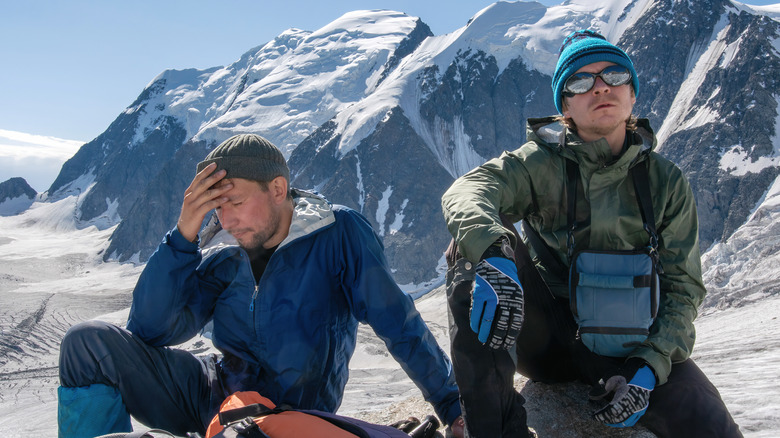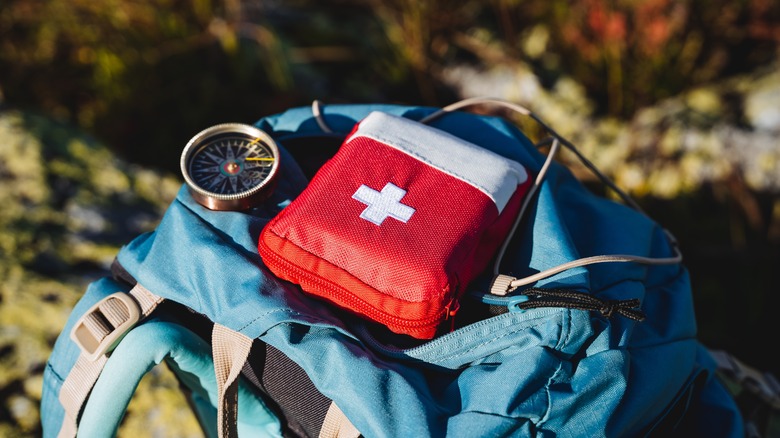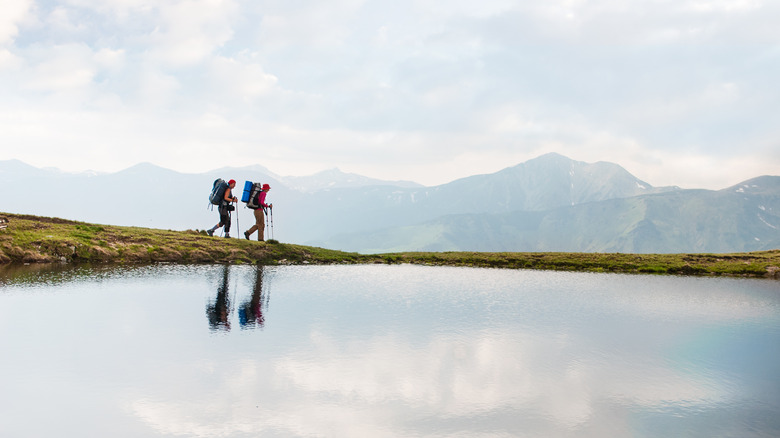Telltale Signs Of Altitude Sickness And What To Do If You Have Them
If you are planning a trip up into the mountains, then you are probably looking forward to some incredible views and that first breath of crisp mountain air. However, it is important to remember that anytime you go to a high-altitude location (especially if it's above 8,000 feet or 2,438 meters) there is a risk of altitude sickness. While people who have had altitude sickness before are more likely to get it in the future, even those who have gone their whole lives without it can suddenly develop altitude sickness if the conditions are right. Unfortunately, being young and in shape does not decrease your risk of developing the disease and it can happen to anyone at any time.
Because of this, it's important to know what the symptoms of altitude sickness are so that you can recognize them in yourself and others. Acute mountain sickness –- or AMS –- is the mildest form of the illness and can be treated with a few days rest to allow your body to acclimatize. However, the more severe versions including high-altitude pulmonary edema (HAPE) and high-altitude cerebral edema (HACE) require immediate descent to a lower altitude and medical treatment. So, what are the telltale signs of altitude sickness and what should you do if you or someone you know is experiencing them?
The first sign is a headache
For most, a throbbing headache is the first symptom of acute mountain sickness. While headaches can also be caused by other factors such as dehydration, AMS headaches are a little different and often don't respond to over-the-counter pain medications. If you are at a high elevation and suddenly develop a pounding headache, it's a good idea to find a place to stop and rest until your body can adjust to the altitude or you can rule out AMS as the cause of the headache.
Drinking plenty of water and taking pain medication, like aspirin and paracetamol, is a good way to start treating symptoms. If your headache disappears quickly after consuming medicine and water, this means that it was likely caused by dehydration and not AMS. However, if the headache continues or you start to experience more symptoms, it is a sign that you have acute mountain sickness and need to take the necessary precautions to help your body adapt to an environment with less oxygen.
If you believe you may have AMS, it is important to stop any physical activity and not climb to a higher altitude. Instead, remain at your current altitude for a few days until your symptoms are gone. Once your symptoms have fully disappeared, you may cautiously continue your physical activity or ascent to a higher elevation.
You may also feel an inability to sleep or eat
Once you've recognized that your headache is not from dehydration, you will start noticing more symptoms of AMS including a loss of appetite and problems sleeping. During this time, you may find it difficult to eat at all without feeling sick. However, despite this, it is important to continue eating to keep your energy levels up.
According to an article published in the Journal of Wilderness Medicine, eating high-carb foods may help improve AMS symptoms and make you feel better faster. This is because carbohydrates require your body to use less oxygen to convert them into usable energy and they also provide a quick blood sugar boost. When experiencing AMS, you should not consume foods high in salt and avoid anything that can exacerbate dehydration like caffeine and alcohol.
One of the most frustrating aspects of AMS is that while sleep is necessary to recover and acclimatize, you will likely have insomnia and experience a very restless night. There's not much that can be done about this symptom except to try to get as much sleep as you can. You should never take any type of sleeping-inducing medicine when you have AMS.
Feeling exhausted during physical exertion
Because AMS is caused by a lack of oxygen in the body, you will likely feel very tired and have a hard time performing activities that you normally find easy such as walking or carrying heavy objects. According to Livestrong, there are a few breathing methods that can help you get more oxygen into your body and exhale more carbon dioxide –- which will mitigate your AMS symptoms.
Firstly, to get more oxygen, it is important to slow down your breathing and take long breaths that pull oxygen to the bottom of your lungs. This type of breathing is called deep breathing because if you do it correctly, your stomach should move up and down as you inhale and exhale.
To expel more carbon dioxide, you can also try a technique called pressure breathing which involves inhaling into the belly and then exhaling forcefully. The pressure breathing technique is used by most mountaineers around the world during climbing expeditions to help promote higher oxygen levels. However, while these breathing techniques may help slightly alleviate symptoms, the most important thing to do with AMS is to avoid all physical activity and allow your body to rest and recover until it's adapted to the conditions of higher altitude.
Dizziness and nausea can signify more severe conditions
It is normal to experience some dizziness and nausea with AMS which may also contribute to other symptoms like lack of appetite and difficulty sleeping. In some cases, people with AMS may be so nauseous that vomiting can occur. However, if you do vomit, you should immediately start to descend and get to a lower altitude because vomiting is also a symptom of HAPE, a much more severe and life-threatening version of altitude sickness.
Furthermore, because dizziness and nausea can indicate a worsening of symptoms, it's recommended that if you experience these symptoms (even without vomiting), you should head to a lower altitude just to be safe. Descending to an altitude of around 984 feet to 3,281 feet below where you started experiencing the symptoms should help (via Cleveland Clinic). Then, once you've reached a safe resting place at a lower elevation, avoid physical activity as much as possible and rest until your symptoms completely disappear.
Signs of severe altitude sickness that should not be ignored
While acute mountain sickness is unpleasant and annoying, it is rarely life-threatening. However, AMS can develop into more severe versions of the illness which are extremely dangerous. HACE and HAPE can turn deadly within 24 hours because they cause the lungs to fill with fluid and the brain to swell.
If the person experiencing AMS becomes confused and begins having balance and coordination problems, they should be immediately moved to a lower altitude, as these are signs of life-threatening altitude sickness. Other symptoms that point to severe altitude sickness include hallucinations, problems breathing and shortness of breath even when resting, fingernails and lips turning blue or gray, coughing up blood, and difficulty staying awake, via the NHS.
Unfortunately, because one of the symptoms of severe altitude sickness is confusion, it is possible that the person suffering may not recognize their symptoms or even outright deny them. This is why it is important to hike with a knowledgeable guide or experienced trekking group when visiting high-altitude locations.





